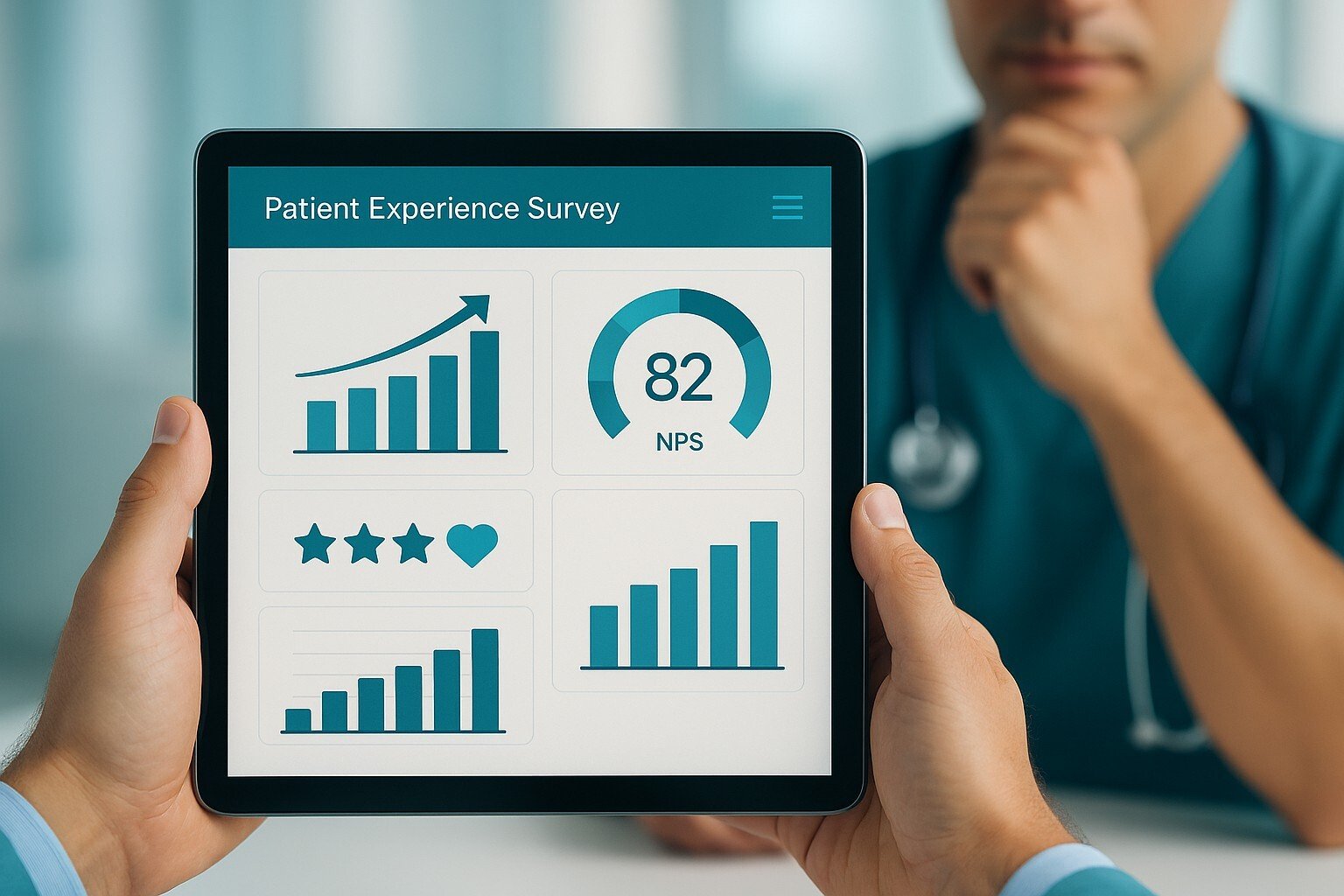55+ Patient Satisfaction Survey Questions, Templates and Strategies
A patient satisfaction survey is a critical tool that provides a direct line of communication between healthcare providers and the people they serve....
10 min read
Alvin Amoroso : 7/7/25 11:39 PM

In the ever-evolving landscape of healthcare, understanding the patient experience is no longer a luxury—it's a necessity. The most direct way to gain this understanding is through well-crafted feedback forms, and our comprehensive guide to patient satisfaction survey examples provides the ultimate resource for this. The first step to improving patient care is knowing where you stand, and a survey is your roadmap. By asking the right questions, you can unlock invaluable insights that can enhance communication, streamline processes, and ultimately lead to better health outcomes and a thriving practice.
Grasping what your patients think and feel about their care journey is the cornerstone of a patient-centric model. These surveys are more than just a customer service tool; they are a clinical and administrative diagnostic instrument. They help you identify friction points in the patient journey, from the first phone call to post-visit follow-up. This article will not only provide a vast array of patient satisfaction survey examples but will also delve into the specific patient survey questions that yield the most actionable feedback, ensuring you can implement changes that truly matter.
Why are patient satisfaction surveys so crucial? In today's competitive healthcare environment, a positive patient experience is a key differentiator. A well-designed survey is your most reliable tool for measuring, monitoring, and improving this experience. The feedback gathered from these surveys directly impacts everything from patient loyalty and retention to your clinic's online reputation and even clinical outcomes. When patients feel heard and valued, they are more likely to be engaged in their own healthcare, leading to better adherence to treatment plans. Utilizing robust patient satisfaction survey examples as a foundation helps ensure you're capturing the data that drives meaningful improvement across your organization.
This section is packed with value, explaining the "why" before the "how" and focusing on the business and care quality impact of feedback.
The effectiveness of any survey hinges entirely on the quality of its questions. The right patient survey questions are clear, concise, and focused on specific aspects of the patient experience. Vague or leading questions can produce misleading data, rendering your efforts useless. The goal is to create a balanced survey that includes a mix of question types, such as Likert scales (e.g., "Rate your satisfaction from 1 to 5"), multiple-choice, and open-ended questions that allow patients to provide detailed, qualitative feedback. This approach ensures you get both quantifiable metrics and the rich, narrative context behind them.
This heading uses a secondary keyword, and the subsequent paragraph immediately explains what makes a good feedback question, setting the stage for the examples to follow.
To create a truly thorough survey, it's best to organize your questions into logical categories. This structure makes the survey easier for patients to follow and provides you with neatly segmented data for analysis. Below are extensive lists of patient satisfaction survey questions broken down by the different facets of the patient journey.
This initial interaction sets the tone for the entire patient experience.
The physical environment and wait time are significant drivers of satisfaction.
This is often the most critical part of the patient's evaluation of the service.
The supporting clinical team plays a massive role in the patient's perception of care quality.
Clarity in communication is paramount for patient trust and a positive experience.
The physical space contributes to the overall sense of comfort and quality.
Financial interactions can be a major point of friction if not handled well.
These questions measure the holistic impression and predict future patient behavior.
Now, let's put these questions into practice. Below are several patient satisfaction survey examples tailored for different healthcare scenarios. These templates can be adapted for your specific needs, whether you run a small private practice, a large hospital, or a telehealth service.
This is a quick survey perfect for sending via text or email immediately after a visit to capture fresh feedback.
This is a more detailed survey for gathering in-depth feedback on the service provided during a primary care visit.
This survey covers a wider range of services for patients discharged from a hospital.
With the rise of virtual care, feedback on the technology and virtual interaction is key.

Creating an effective feedback survey involves more than just copying questions. Following a structured process ensures your survey is clear, unbiased, and produces high-quality data.
Step 1: Define Your Objective What aspect of the patient experience do you want to improve? Are you focused on wait times, provider communication, or the billing process? Having a clear goal will guide your question selection.
Step 2: Choose the Right Survey Type Will this be a short, post-visit pulse survey sent via SMS, or a comprehensive annual feedback form sent by email? The context determines the length and depth.
Step 3: Write Clear and Unbiased Questions Use the patient survey questions listed above as a starting point.
Step 4: Use a Mix of Question Formats Combine scales (1-5), yes/no, multiple-choice, and open-ended questions. Open-ended questions are goldmines for specific, actionable feedback.
Step 5: Keep It Organized and Concise Group questions into logical sections. Respect your patients' time. For most surveys, 5-15 questions are ideal. Longer, more comprehensive surveys should be used sparingly.
Step 6: Test Your Survey Before sending it to all your patients, have a few staff members or trusted patients take the survey. This helps you catch confusing wording or technical glitches.
Step 7: Plan Your Follow-Up The most critical step is what you do with the data. Have a plan for analyzing the results and, most importantly, acting on the feedback you receive.
Collecting feedback is only half the battle. A folder full of survey responses is useless until you analyze it and implement changes.
To get truly honest feedback, patients must trust that their answers will not negatively impact their care.
Manual paper surveys are a thing of the past. Modern technology makes distributing surveys and analyzing data easier than ever.
Good examples focus on specific aspects of the patient's service experience. For instance:
A typical patient satisfaction survey asks questions about key service touchpoints, including:
Here are five standout feedback-focused examples:

A patient satisfaction survey is a critical tool that provides a direct line of communication between healthcare providers and the people they serve....

Imagine two patients leave your clinic. One felt rushed, confused by the billing, and unsure about their treatment plan. The other felt heard,...

A patient satisfaction survey is a structured questionnaire designed to capture patient feedback on their experiences with your healthcare services....